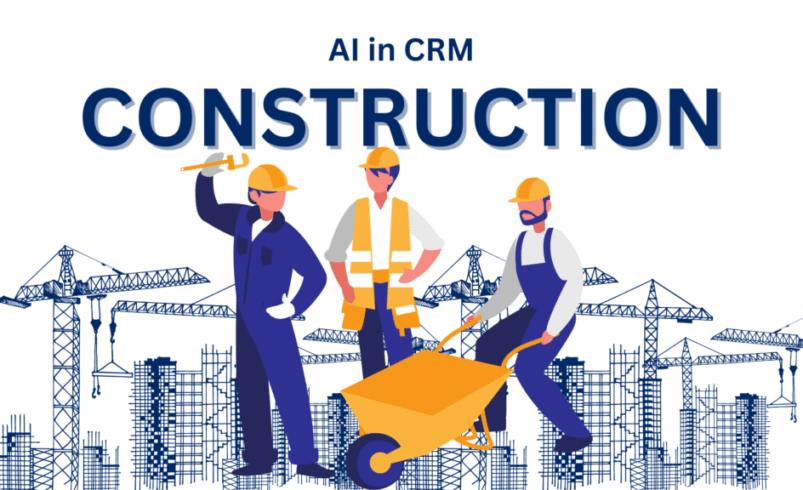How Artificial Intelligence in Construction CRM Can Predict Project Outcomes

The veteran project manager knew something was wrong the moment he walked onto the job site. The crew was working, materials were arriving on schedule, and the weather was cooperating, but thirty years of experience whispered that this project was heading for trouble. He couldn’t pinpoint exactly what triggered his instinct – maybe it was the way the subcontractor avoided eye contact, or the slightly defensive tone from the client during yesterday’s call. His gut was rarely wrong, but gut feelings don’t hold up well in boardroom discussions about budget overruns.
Today’s artificial intelligence systems are learning to recognize these same subtle warning signs, but they’re doing it by analyzing thousands of data points that human minds simply can’t process simultaneously. They’re spotting patterns that emerge across hundreds of completed projects, identifying the early indicators that predict problems weeks or months before they become obvious to human observers. The difference is that AI can explain exactly what it’s seeing and quantify the probability that trouble is coming.
The foundation of predictive project analysis lies in the massive datasets that modern construction operations generate almost accidentally. Every email exchange with a client gets logged with timestamps and sentiment markers. Material delivery delays get recorded with weather conditions, supplier performance metrics, and seasonal demand patterns. Change order requests arrive with detailed reasoning, cost impacts, and approval timelines. Subcontractor communications carry tone indicators, response time patterns, and historical reliability scores. What looks like routine business correspondence to humans becomes rich training data for machine learning algorithms.
Weather patterns provide some of the clearest examples of how AI prediction works in practice. Traditional project planning might note that rain delays construction, but AI systems can correlate specific weather patterns with project outcomes across entire regions and seasons. They learn that three consecutive days of morning fog in certain geographic areas tends to correlate with concrete curing problems that surface two weeks later. They discover that projects starting during particular temperature ranges have different material performance characteristics that affect long-term warranty claims.
The algorithms become particularly sophisticated when analyzing communication patterns between project stakeholders. Machine learning systems can detect subtle changes in language that indicate growing frustration, confusion, or unrealistic expectations. A client who starts asking more detailed questions about timeline might be showing early signs of anxiety that could lead to micromanagement behaviors. A subcontractor whose response times gradually increase might be juggling too many projects and heading toward performance problems.
Financial data patterns reveal risks that aren’t immediately obvious to human analysis. AI systems can identify purchasing behaviors that correlate with cost overruns, such as rush orders that indicate poor planning or frequent material substitutions that suggest design problems. They can spot the subtle budget creep that occurs when small change orders accumulate into major cost impacts. Most importantly, they can predict which types of projects are likely to experience financial problems based on dozens of variables including client payment history, project complexity scores, and seasonal cash flow patterns.
Subcontractor performance analytics represent one of the most valuable applications of predictive AI in construction management. The systems learn to recognize early warning signs of subcontractor problems by analyzing historical patterns across multiple projects. They might discover that electrical contractors who submit bids more than 15% below the average for similar work have an 80% probability of requesting change orders later. Or they might identify scheduling patterns that indicate when particular trades are overcommitted and likely to cause delays.
The predictive models become increasingly accurate as they incorporate real-time project data. Instead of making predictions based solely on historical patterns, they can adjust their forecasts based on current project performance. A project that’s running two days behind schedule might not seem concerning to human managers, but AI systems might recognize this particular delay pattern as strongly correlated with eventual cost overruns of 15-20%.
Risk scoring systems can automatically flag projects that deserve extra management attention before problems become critical. When Jobnimbus’s software integrates predictive analytics, for example, it might assign risk scores to active projects based on communication patterns, schedule performance, and financial indicators. Projects with high risk scores can receive additional oversight, more frequent check-ins, or proactive intervention strategies designed to prevent predicted problems.
The intervention capabilities represent where predictive AI moves beyond simply identifying risks to actively preventing them. When systems predict that a particular project is likely to experience material delays, they can automatically trigger earlier ordering processes or suggest alternative suppliers. When communication analysis indicates growing client dissatisfaction, the system can recommend specific intervention strategies based on what has worked in similar situations historically.
Cost forecasting becomes remarkably precise when AI systems can process multiple variables simultaneously. They can predict how weather delays will cascade through project schedules and affect labor costs. They can anticipate how design changes will impact material waste percentages and disposal costs. They can even forecast how current market conditions will affect material pricing for projects that won’t reach procurement phase for several months.
The learning cycle creates continuous improvement in prediction accuracy. Each completed project becomes training data that refines future forecasts. The algorithms learn from both successful predictions and forecasting errors, gradually becoming more accurate at identifying the subtle indicators that predict project outcomes.
Integration challenges remain significant, particularly around data quality and consistency. AI systems require clean, consistent data to make accurate predictions, but construction projects generate information in dozens of different formats across multiple platforms and stakeholders.
The contractors who master predictive AI often find that their competitive advantage extends far beyond avoiding problems – they can bid more accurately, plan more effectively, and deliver more consistent results than competitors still relying on experience and intuition alone.



